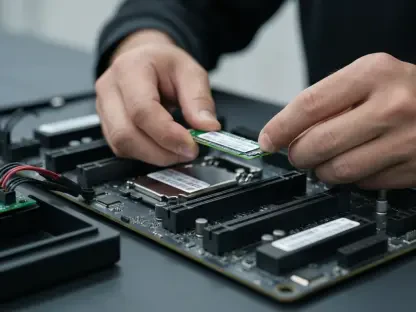In the rapidly evolving landscape of technology, staying up to date with the latest software is crucial for both functionality and security. This urgency is underscored by WhatsApp’s decision to end support for certain older smartphone models starting from June 1, 2023. For users with phones predating 2014, this update signifies a necessary shift toward newer technology to maintain their connectivity via WhatsApp’s widely used messaging service.
Understanding WhatsApp’s Technology Update
This recent modification in device support mainly affects iPhones and Android phones released before 2014. Notably, WhatsApp has raised its operating system requirements to iOS 15.1 for Apple and Android 5.0 for its Android counterpart. The move is part of a strategic approach to emphasize enhanced user experience and security, acknowledging that older devices often struggle to meet the demands of modern apps and may be more susceptible to vulnerabilities.
Aligning with broader trends in app maintenance, the update highlights WhatsApp’s commitment to user security. The decision supports crucial performance enhancements, underscoring the importance of keeping digital communication tools both secure and efficient.
Key Features Impacted by Device Support Changes
Security Enhancements
Security is a significant aspect addressed by the updated device support. By discontinuing support for outdated technology, WhatsApp ensures users benefit from more robust security features inherent in newer operating systems. This transition mitigates risks associated with data breaches and cyber threats that more readily target older, less sophisticated security architectures. Users, therefore, receive a higher level of data protection, reducing potential exposure to malicious attacks.
Functional Improvements
Functionality also sees a marked improvement, with newer devices offering capabilities that older models cannot match. The update enhances app performance, optimizing message delivery speed, user interface responsiveness, and multimedia handling. These improvements collectively foster a more seamless experience, offering users subtle yet impactful enhancements to the daily use of the messaging app.
Recent Developments in Device Support Strategy
WhatsApp’s device support strategy reflects broader trends in mobile technology. As smartphones continue advancing, users gravitate toward devices that provide state-of-the-art features and seamless app integration. These updates align with the shift in consumer behavior, where increased expectations and industry standards drive the demand for enhanced functionalities and security.
Additionally, this move signifies a broader industry push to phase out older models, encouraging consumers to adopt newer technology. These actions mirror society’s ever-growing reliance on cutting-edge technology and the expectations that accompany such advancements.
Impact on Real-World Applications
The update notably affects sectors relying heavily on messaging apps, like business communications, customer service, and social interactions. The need for real-time messaging solutions drives these sectors to constantly evolve, with WhatsApp’s update shaping communication practices further. Users in professional environments might experience shifts in how they interact, prioritizing updated hardware to maintain optimal communication channels and efficiency.
Moreover, particular user groups traditionally dependent on older devices may now face incentives to upgrade, reshaping how interactions occur across different demographics. This scenario accentuates the balance between technological loyalty and the necessity for innovation.
Addressing Challenges and Constraints
While these updates provide clear benefits, they present challenges for users clinging to outdated devices. Financial constraints can impede the ability to upgrade, causing concern among those less equipped to invest in newer technology. Furthermore, frequent software updates pose continuous technical challenges, as developers must account for market fragmentation and varied hardware capabilities.
The market’s rapid pace leaves certain groups vulnerable, emphasizing the importance of providing informed guidance and support during transitions to new devices. This persistent cycle necessitates a focus on innovation and comprehensive education to ease technological integration.
Future Prospects for WhatsApp’s Device Support Strategy
Looking ahead, WhatsApp is likely to continue refining its device support policies, potentially leading to further enhancements in user experience and security measures. These forthcoming changes may usher in a new era of adaptive short-form messaging that seamlessly integrates with evolving mobile computing technologies and user behaviors. Speculatively, long-term effects could redefine communication practices, encouraging users to continually engage with technological progress. As newer models become more widespread, WhatsApp’s strategy in managing legacy devices will remain critical to maintaining its position as a leader in instantaneous messaging solutions.
Evaluating the Update’s Impact
Overall, WhatsApp’s device support update represents a decisive move toward enhancing user experience through improved security and functionality. The company’s strategy reinforces its role at the forefront of digital communication, embracing technological efficiency and security. Users now find themselves at a crossroads, balancing nostalgia with the necessity of adaptation in an ever-evolving digital landscape. This update reaffirms the principle that keeping pace with technological advancements is not merely advantageous but imperative for seamless connectivity.









